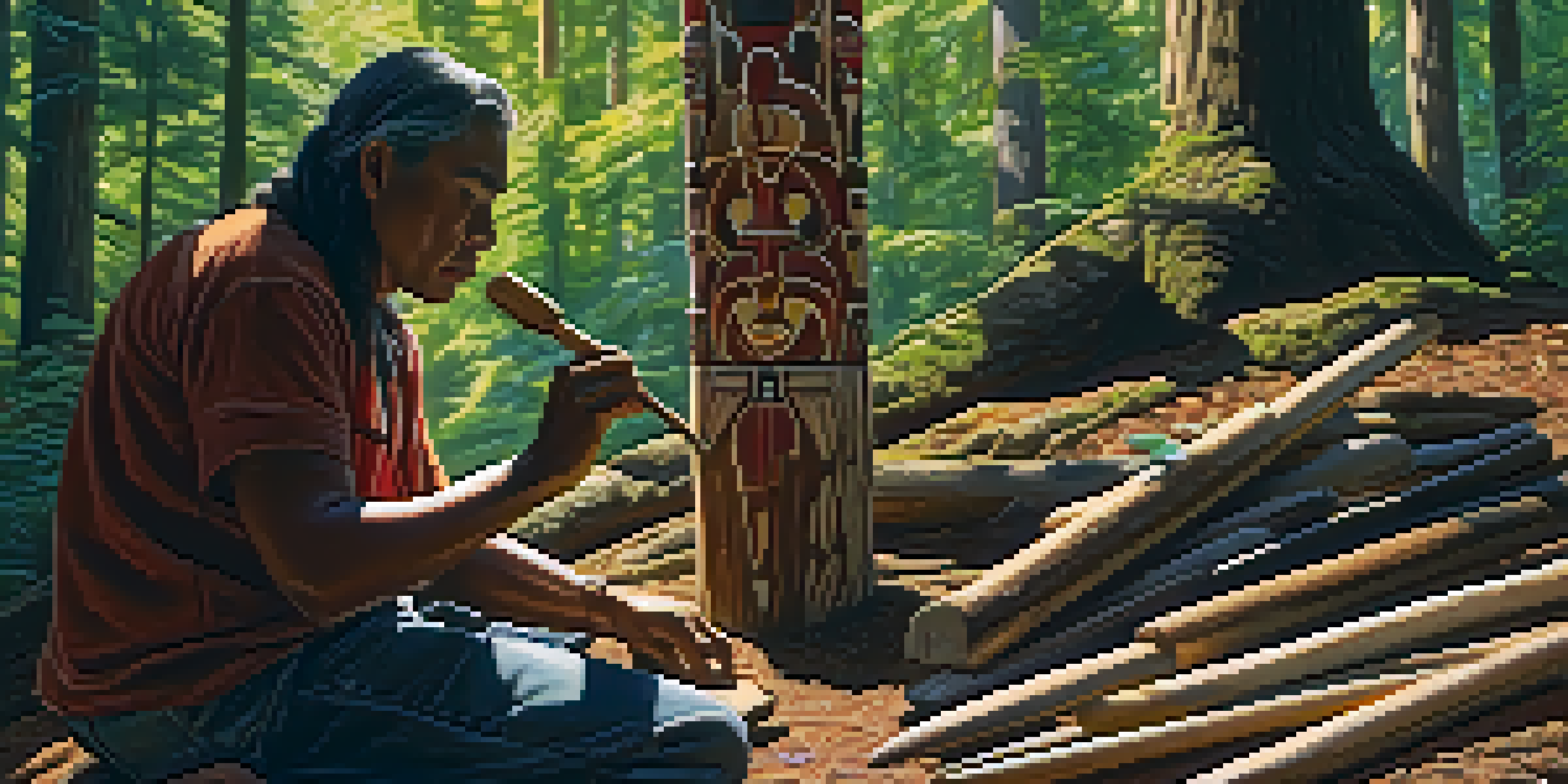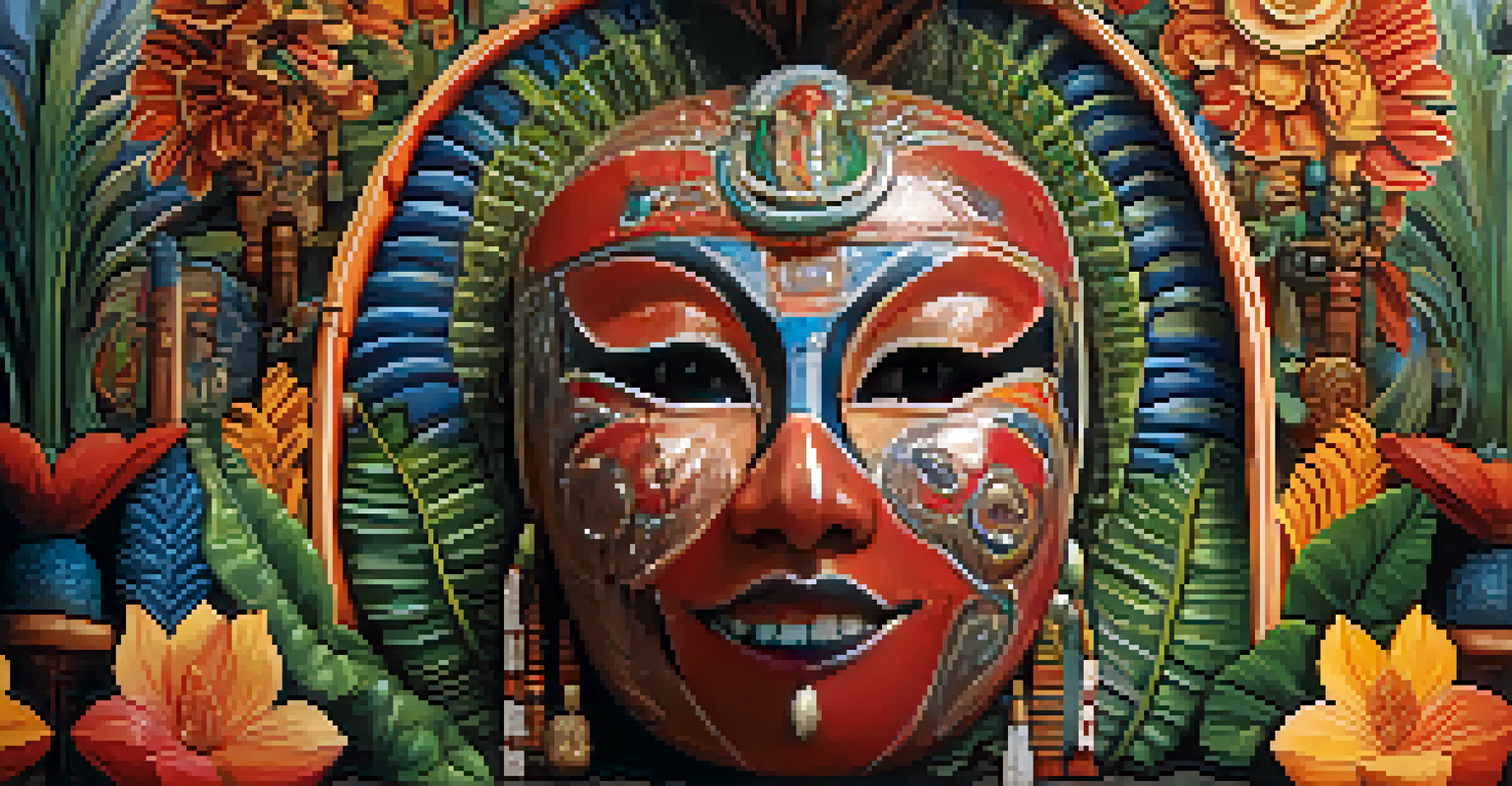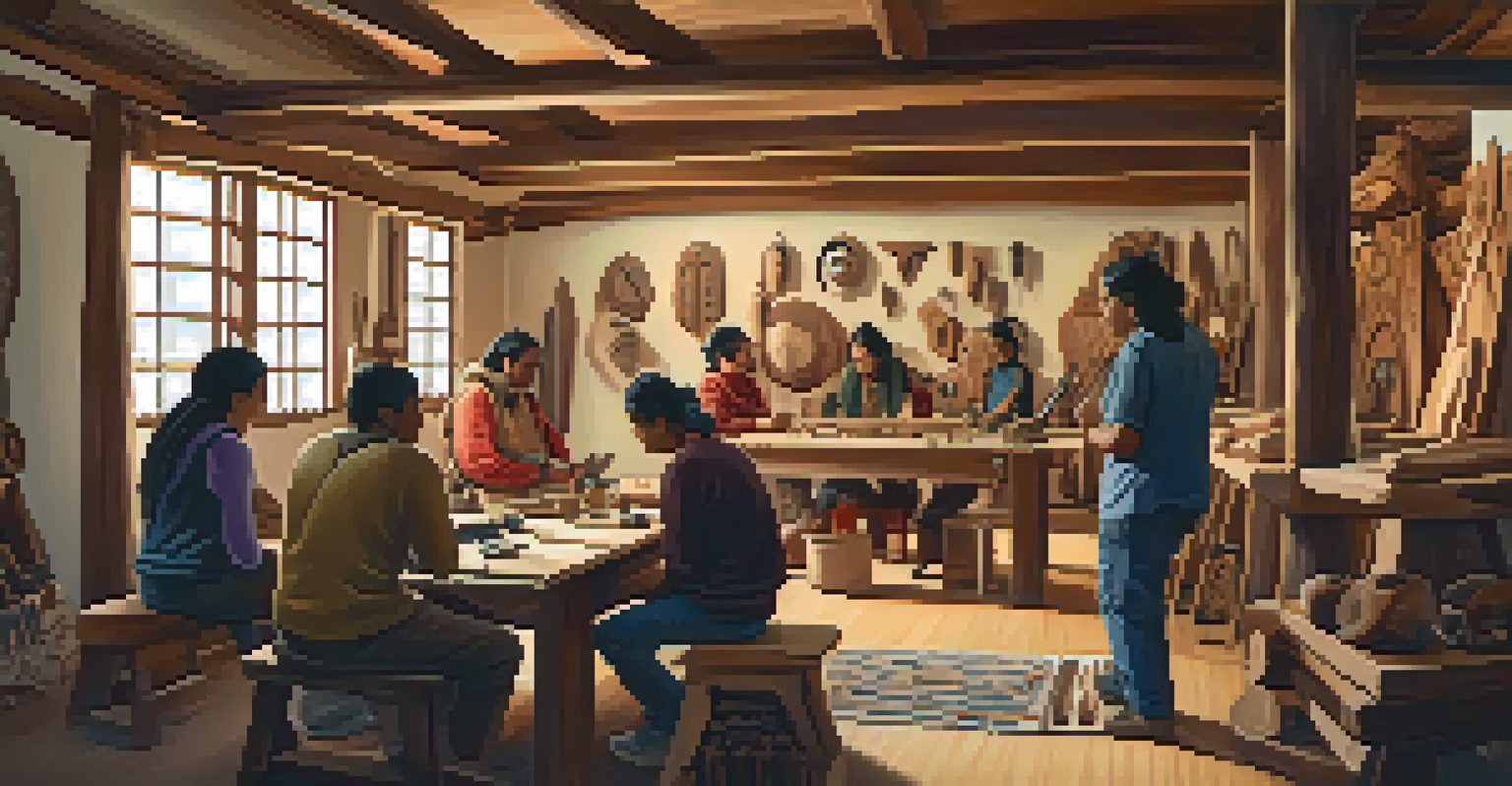The Role of Carving in Indigenous Rituals and Ceremonies

Introduction to Carving in Indigenous Cultures
Carving holds a profound place in many Indigenous cultures, serving as a means of expression and storytelling. It transcends mere aesthetics, embodying the beliefs, histories, and values of various communities. From totem poles to ceremonial masks, each carved piece is steeped in symbolism and tradition, connecting the past with the present.
Art is a reflection of the culture that produces it.
These artistic creations are not just visually striking; they often represent ancestral spirits or significant events in a tribe's history. For many Indigenous peoples, carving is a spiritual practice, where the act itself becomes a form of prayer or meditation. This deep connection to their art form speaks to the broader importance of creativity in cultural identity.
Through carving, Indigenous artists convey messages about their relationship with nature, community, and the cosmos. This practice serves not only as a form of personal expression but also as a way to educate future generations about their heritage. Ultimately, carving is woven into the fabric of Indigenous life, standing as a testament to their enduring legacy.
The Spiritual Dimension of Carving
In many Indigenous cultures, carving is viewed as a sacred act, often imbued with spiritual significance. Artists might invoke the spirits of their ancestors or seek guidance from nature while carving, making it a deeply personal and communal experience. This spiritual connection elevates the act of carving beyond mere craft to a form of worship.

For instance, in certain tribes, the wood or stone selected for carving is believed to possess its own spirit, which the artist must respect and honor. This belief system reinforces the idea that every carving is a living entity, possessing a soul and a story of its own. Therefore, the finished piece is not just an object; it becomes a conduit for spiritual energy.
Carving as Cultural Expression
Carving serves as a vital means of storytelling and expression in Indigenous cultures, encapsulating their beliefs, histories, and values.
Moreover, rituals surrounding the unveiling or presentation of carved items further highlight their spiritual dimension. These ceremonies often include prayers, songs, and dances, creating a sacred space where the community can come together to celebrate their shared heritage. In this way, carving acts as a bridge between the physical and spiritual worlds.
Carving as a Storytelling Medium
Carving serves as a powerful storytelling medium within Indigenous cultures, with each piece narrating tales of creation, history, and morality. For many Indigenous peoples, oral traditions are complemented by visual storytelling, where carvings depict significant events or teachings. This blend of art and narrative fosters a deeper understanding of cultural values and lessons.
The stories we tell ourselves shape our identity and our cultural values.
Consider the intricate designs on a totem pole, each figure representing a different aspect of the tribe's history or mythology. As families share these stories, they reinforce their identity and connection to their ancestors. Carvings become a way to pass down wisdom, ensuring that cultural narratives endure through generations.
In this sense, carving is not just an artistic endeavor; it is a vital educational tool. It allows Indigenous peoples to teach their children about their heritage in an engaging and memorable way. By witnessing the stories depicted in carvings, younger generations are imbued with a sense of pride and responsibility to uphold their culture.
The Role of Carving in Ceremonial Practices
Ceremonies often feature carvings that play crucial roles in rituals, symbolizing various aspects of life, death, and rebirth. For example, masks carved for dance ceremonies may represent spirits or ancestors, inviting their presence and guidance during the event. This integration of carving into rituals underscores the interconnectedness of art and spirituality.
During important life events, such as weddings or funerals, carved items may be used to honor participants and signify their roles within the community. These objects serve as reminders of the values upheld by the tribe, reinforcing social bonds and shared beliefs. The presence of carved pieces in ceremonies emphasizes their significance in marking transitions and celebrating life.
Spiritual Significance of Carving
In many Indigenous communities, carving is considered a sacred act, intertwining artistry with spirituality and communal rituals.
Furthermore, the craftsmanship involved in creating ceremonial carvings is often recognized and respected within the community. Artists may be seen as spiritual leaders or custodians of tradition, further elevating the status of their work. Through these practices, carving becomes an integral part of ceremonial life, imbuing events with deeper meaning.
Carving Techniques and Materials Used
The techniques and materials used in carving vary widely among Indigenous cultures, each with its own unique traditions. Common materials include wood, stone, bone, and ivory, each chosen for its significance and availability. The choice of material often reflects the environment and resources of the community, showcasing their relationship with nature.
Tools used for carving can range from simple hand-held implements to more sophisticated instruments, reflecting the skills passed down through generations. Many artists still employ traditional methods, emphasizing the importance of craftsmanship and personal touch in their work. This dedication to technique not only enhances the quality of the carvings but also preserves cultural heritage.
Moreover, the process of carving itself is often a communal activity, with artists sharing knowledge and skills with one another. This collaborative spirit fosters a sense of unity within the community and encourages the continuation of traditional practices. As techniques evolve, they remain rooted in the cultural significance of carving, ensuring its place in contemporary Indigenous life.
Challenges Facing Indigenous Carving Practices
Despite the rich traditions surrounding carving, Indigenous artists face numerous challenges today. One significant issue is the appropriation of Indigenous art by commercial enterprises, often without proper recognition or compensation for the artists. This not only undermines the artists' livelihoods but also dilutes the cultural significance of their work.
Additionally, the loss of traditional knowledge and skills poses a threat to the continuation of carving practices. As elders pass on, younger generations may find it challenging to connect with their heritage amidst modern influences. This generational gap can lead to a decline in the number of skilled carvers, jeopardizing the future of this vital art form.
Challenges and Future of Carving
Indigenous artists face challenges such as cultural appropriation and the loss of traditional skills, but efforts are underway to preserve and innovate this essential art form.
Efforts are being made to address these challenges through workshops, cultural programs, and advocacy for Indigenous rights. By supporting Indigenous artists and promoting awareness of the significance of their work, communities can help ensure that carving remains a vibrant part of their cultural identity. Ultimately, fostering appreciation for this art form is essential for its survival.
The Future of Carving in Indigenous Communities
Looking ahead, the future of carving in Indigenous communities is a blend of tradition and innovation. While many artists honor their ancestral techniques, they are also incorporating contemporary styles and materials into their work. This evolution reflects the dynamic nature of culture and allows artists to express their identities in new ways.
Collaboration between Indigenous and non-Indigenous artists is also emerging, creating opportunities for cultural exchange and mutual respect. Such partnerships can enhance visibility for Indigenous art and bring broader recognition to its significance. By working together, artists can share their stories and challenge stereotypes about Indigenous cultures.

As awareness of the importance of carving grows, so does the support for Indigenous artists and their practices. With community backing and educational initiatives, the future looks promising for carving as a vital expression of Indigenous identity. By celebrating and preserving this art form, we honor the richness of Indigenous cultures and their enduring legacies.